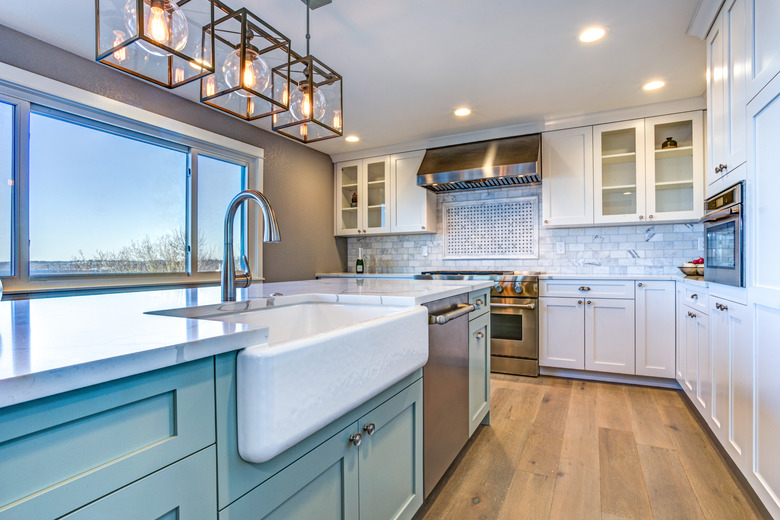How To Move Kitchen Cabinets
If your kitchen is dated and dull, then moving the cabinets can create an inspired space with better organization and an updated style. Reusing kitchen carcasses can save money and refresh your space.
Whether you are contemplating simply moving cabinets or completely rearranging existing kitchen cabinets, there are a few tips and tricks to know to make the project go smoothly.
Preparining to Take Out Kitchen Cabinets
Preparining
to Take Out Kitchen Cabinets
Remove all the items from the cabinets, throwing out or repurposing dated or rarely used items. Place them in bins with lids that lock to keep them neatly tucked away until you are ready to return them to their newly installed home.
While the kitchen cabinets are still attached to the wall, it's a good time to clean them. After removing all the detritus inside the cabinets, wipe them down inside and out with a solution of simple dish soap and water or a mix of one-part vinegar to one-part water and a quarter of liquid soap. Once they are removed, give the backs and sides a good cleaning, too.
Removing Cabinets to Reuse
Removing
Cabinets to Reuse
They may seem sturdy and permanent, but cabinets are relatively easy to remove. But they are heavy, awkward and can be temperamental if the housing has been attached to the plaster walls for decades. Have an extra set of hands and a clean space to put the cabinets once they are free from the anchors on the wall.
Remove all doors and drawers carefully. If you're reusing the screws , tape them to the inside of the doors or to the hinges. Remove the cove molding or soft caulking with a putty knife or pry bar.
Cabinets are attached to the wall and neighboring shelving with two to three screws. Working from the top to the bottom, detach them from each other before you unscrew the cabinet from the soffit, which is the horizontal underside of the cabinet. The screws are either on the inside or the very top edge and underside of the cabinet.
Prepare Walls for Cabinet Reconfiguration
Prepare
Walls for Cabinet Reconfiguration
Sealing or priming the wall can stop water, grease and other kitchen calamities from damaging bare drywall when they splash or spill. If you need to repaint the kitchen due to moving the cabinets and exposing bare wall, then now is the time to do it.
To be safe, test the area for studs to hold the newly configured cabinet design. Draw a level line on the wall that will hold the cabinets, then find the studs along where the cabinets will rest above the countertop. That is typically about 20 inches, depending on your design style.
Rearranging Existing Kitchen Cabinets
Rearranging Existing Kitchen Cabinets
Wasted space in the kitchen is a crime. Changing up the kitchen cabinet configuration can revitalize and reorganize a kitchen without the cost of buying brand new cupboards.
If you have space above the current kitchen cabinets, then you can use that to your advantage. Move the current cabinets up to the ceiling and add open shelving to the space below to create modern look. This also allows you to hide the stained plastic ware and tall tumblers in the space above and still show off the best dishes that you own.
Installing Kitchen Cabinets
Installing
Kitchen Cabinets
Install the upper cabinets first so you aren't awkwardly bending over the bottom cabinets to fasten them to the wall. Cabinets that share a partition should be clamped together after being secure to the wall. After installing the doors, adjust them by tightening or loosening the hinge.
Install the bottom cabinets, and use a level to ensure the surface is even. A shim can correct any slant. Return all doors and drawers, and repair any hinges or slides to enjoy a fully functional and restyled kitchen.
